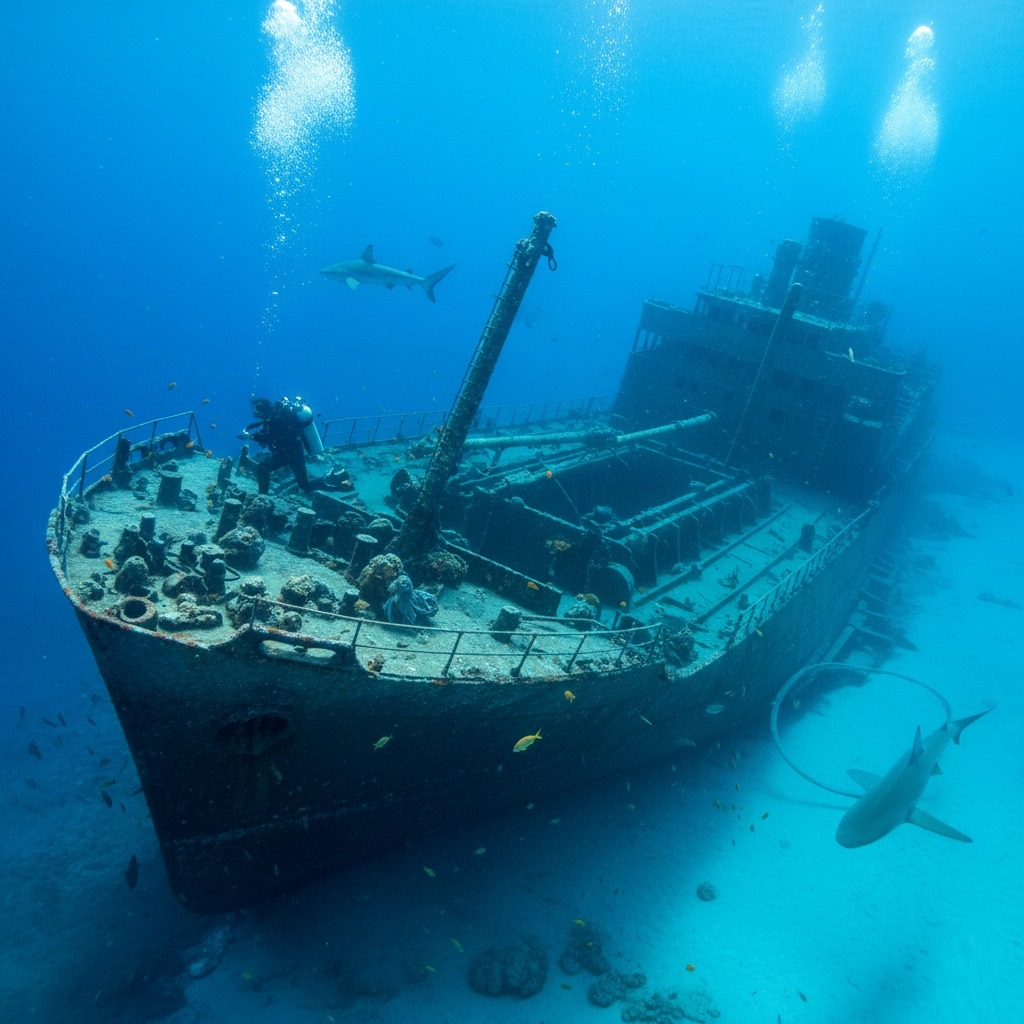The Sunken Relics of the Red Sea: Exploring the Thistlegorm Wreck

Our journey began not with maps and shovels on dry land, but with fins and masks in the shimmering azure expanse of the Red Sea, off the coast of Sharm el Sheikh. For decades, the legend of the SS Thistlegorm had drawn whispers among maritime historians and adventurous divers alike. This wasn’t merely a sunken vessel; it was a time capsule, a frozen moment from the tumultuous tides of World War II.
As our boat approached the GPS coordinates, the surface offered little hint of the historical treasure beneath. But then, as we descended through the warm, pellucid water, a ghostly silhouette began to materialize from the deep. It was immense, dark, and utterly captivating.
The first sight of the Thistlegorm, almost 80 years after she met her fate in 1941, always takes your breath away. The massive hull, once a proud freighter, now lay broken but largely intact on the sandy seabed. It was no longer a ship of war, but a cathedral of coral. Sponges and anemones clung to every surface, painting the rusted steel in a riot of reds, oranges, and purples. Schools of fusiliers darted in and out of her decaying decks, their movements like living currents.
We were archaeologists of the deep, our dive lights cutting through the shadows, illuminating secrets that had been hidden for generations. As we navigated the stern, a majestic grey reef shark glided past, a silent guardian of the wreck. Further along the starboard side, another shark emerged from the gloom, circling with an ancient grace. The Thistlegorm was a thriving ecosystem now, a vibrant counterpoint to its violent past.
Near the bow, nestled amongst the coral growth, we spotted the first of the octopuses, its curious eyes watching us as it subtly shifted its camouflage. Another two were later discovered, cleverly tucked away in crevices, masters of their aquatic domain. These creatures weren’t invaders; they were the new inhabitants, seamlessly integrated into the ship’s new purpose as an artificial reef.
One of our team members, a veteran marine archaeologist, pointed out a section where the deck had collapsed, revealing the cargo holds. Within, we could still discern the outlines of the cargo she was carrying – motorcycles, trucks, rifles – destined for the British Eighth Army in North Africa. It was a poignant reminder of the lives that depended on this very cargo, and the abrupt end to its journey.
As we ascended, trailing bubbles like whispers returning to the surface, the Thistlegorm faded back into the depths, a silent monument. Each dive is more than just an exploration; it’s a communion with history, a vivid encounter with the past, preserved by the sea, and teeming with new life. The sunken relics of the Red Sea continue to tell their story, a timeless narrative of human endeavor, conflict, and nature’s enduring power to reclaim and renew.
